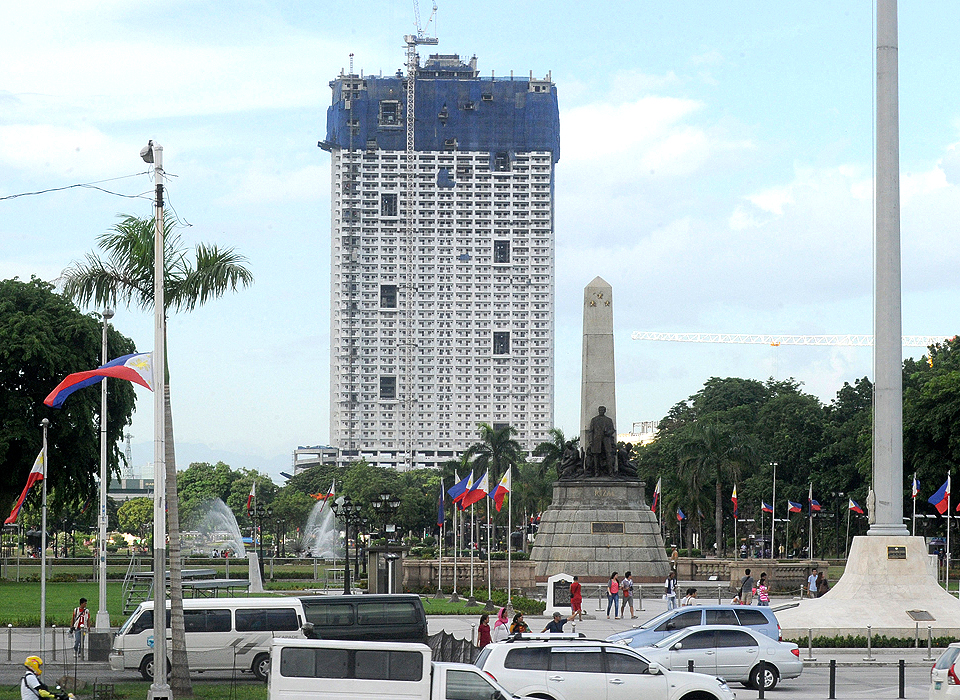Trees and reflective glass? Experts suggest ways to hide Torre de Manila
With the Supreme Court yet to hear oral arguments on the Torre de Manila, the high-rise condominium going up behind the Rizal Monument in Rizal Park, experts are trying to come up with suggestions to cover up the problem, literally.
The high court on June 16 issued a temporary restraining order stopping the construction of the building, which mars the visual corridors of the monument.
The National Historical Commission of the Philippines (NHCP) suggested that the Torre de Manila use reflective glass on its exterior. However, an architect said that this would mean that the building would have no natural ventilation and access to fresh air—a violation of the National Building Code of the Philippines.
"Ika-capture [ng reflective glass] iyong sky, iyong surroundings, iyong trees. So in a way, magdi-disappear [ang Torre de Manila] doon sa likod ng monument. Pero ang restriction doon, dapat iyong glass will be fixed glass, frameless," Chris Lustre said in a report on GMA-7's "24 Oras" on Monday.

"Magtanim ng malaking Filipino trees sa likod ni Jose Rizal so matatakpan ang sight ng Torre de Manila," he said.
During a hearing on the issue last year, real estate developer DMCI Homes Inc. promised to shoulder the cost of planting trees if the plan pushes through.
It also asserted that the 46-storey building will have an Art Deco-inspired design to blend with the architecture of some of Manila's old buildings.
But Gemma Cruz-Araneta, the former vice chairperson of the Manila Historical and Heritage Commission (MHHC) and Jose Rizal's great-granddaughter, pointed out that DMCI only had a permit to build a seven-storey building.
"They did it in bad faith kasi seven storeys lang talaga iyong umpisa," she said of the developer's eventual construction of 32 storeys (as of December 2014) and counting.
At a hearing last year, architecture and heritage conservation columnist Paulo Alcazaren said that if the SC decides to demolish or cut the height of the P1 billion residential building, the Philippines could also adopt other countries' "transfer of development rights" program. This option would allow the developer to build another structure of the same asset value in another location. — Trisha Macas/BM, GMA News



